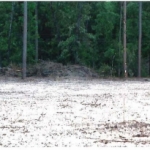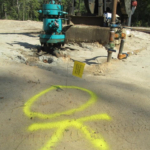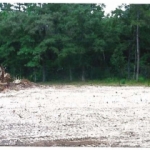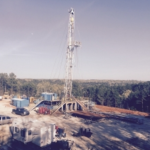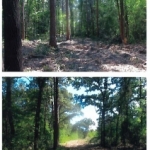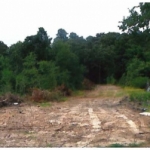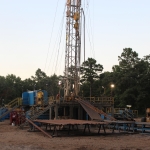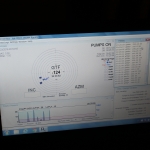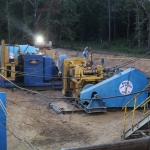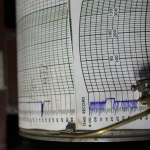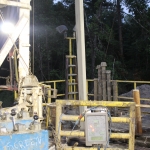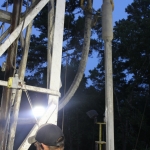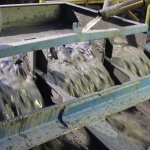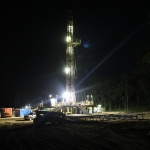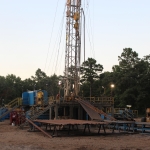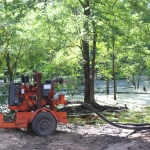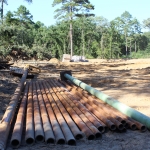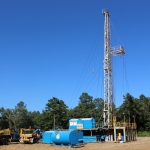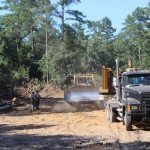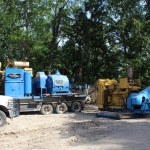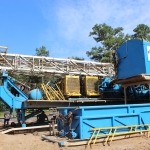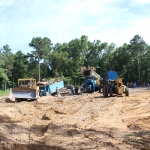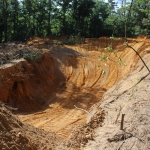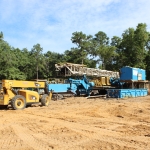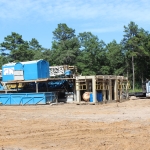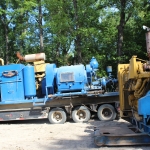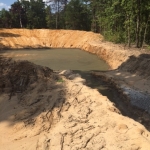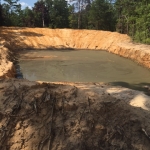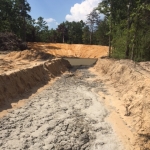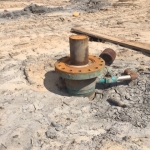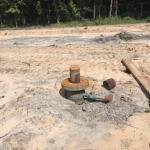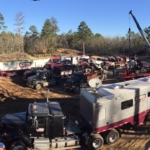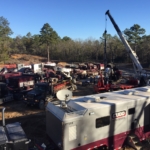Zuber #2 – Hawkins Field
Hawkins Field, Wood County, in East Texas, is bounded on the north by Hopkins County, on the east by Upshur County, on the South by Smith County and on the West by Bains and Van Zandt Counties. Its center is 32.78639⁰ north latitude and 95.38208⁰ east longitude, ninety-five miles east of Dallas. It comprises 626 square miles. The Hawkins Field produces primarily from the Woodbine formation that is composed of many faulted sands.
The Hawkins Field was discovered in 1940 and has been named as one of the largest oil fields ever discovered in Texas. ExxonMobil has been producing oil and natural gas at the Hawkins Field for nearly 70 years. Exxon unitized the field in 1975 for secondary recovery. The field has produced nearly 1,000,000,000 barrels of oil and an estimated 1,000,000,000,000 cubic feet of gas from about 365 wells with an average of 2,465,000 barrels of oil individually and more than 2 billion cubic feet of gas per well.
In late 2011 Exxon undertook a massive $340 million construction project to build a nitrogen gas injection plant on the field. The building phase of this gas injection plant continues today. There are 12-17 gas injection wells located strategically on the heavily faulted field. These wells have substantially increased the oil and gas production in the field. It’s predicted that the gas injection wells will produce about 40 million barrels of oil equivalent, extending the life of the field for an additional 25 years.
The 20 acre Zuber Prospect within the Hawkins Field offers the partners an opportunity to reap the benefits of the nitrogen gas injection in a new well to be drilled by Shale in the immediate future.
Hawkins Field At – A-Glance
- Drilling and Production in Prolific Hawkins Field
- Nitrogen Gas Injection exponentially increases production and extends life of the field 25+ years
- Estimated 40 million barrels of oil in Woodbine Formation alone
- Virtually untapped Sub-Clarksville Formation
- Rare Opportunity for Select Partners
The Hawkins Field produces from the Woodbine formation that is composed of many faulted sands. The reservoir sands are highly permeable, contain a gas cap, water drive and an asphalt layer.
While the Hawkins Field’s primary production is from the Woodbine formation, the Sub-Clarksville is also present. The Sub-Clarksville should benefit from the nitrogen gas injection and has been commercially productive in the field and on the Zuber lease. Additionally, the Sub-Clarksville produces very little or no water.
Geologically the sands and chalk fractures are being charged by the nitrogen gas flood of the Hawkins Field by Exxon through a system of fault structures running northeast/southwest through the leases. This process of injecting nitrogen pushes the oil from the gas cap downward and outward and thereby causes lower structure wells to become the producers of the swept oil.
Shale Energy’s Zuber #1 well will be drilled to 5000’, setting 7” casing and dual completing in the Woodbine and Sub-Clarksville with (16) 300’-400’ horizontal laterals. Probable production could see IPF rates of 500-1,000 BOPD with 2-4 million cubic feet of gas per day. The reserves in the Zuber #1 are as follows: 48 feet of Sub-Clarksvlle has an estimated 2,304,000 barrels of oil in place and 18 feet of Woodbine has 864,000 barrels of oil in place for a total 3,168,000 BOIP/40AC. Total recoverable reserves are estimated at 2,000,000 barrels of oil. Shale Energy Int’l, LLC/SEI will be the only operator within the Hawkins Field other than ExxonMobil’s XTO Energy, Inc.
In 1975, when the field was unitized, this lease was held by production and did not become a part of the unit even though the surrounding acreage was unitized.






